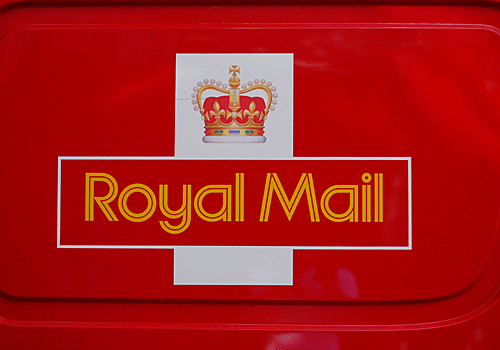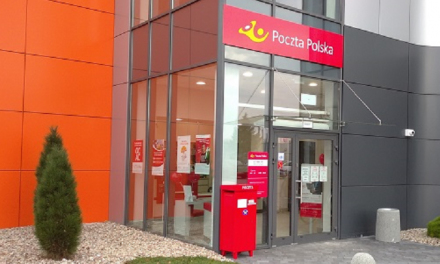
Royal Mail warning over Amazon’s impact on parcel growth, as profits fall

Royal Mail’s underlying pre-tax profits fell 6% in the first half of the year as it warned that Amazon’s new delivery network will wipe out as much as half of the growth in UK parcel volumes for two years. E-commerce giant Amazon, which has always used multiple carriers to deliver its online purchases in the UK, has been developing its own courier system.
The company said Amazon’s move to switch some of its e-commerce deliveries to the new in-house delivery network will reduce the growth rate for the UK addressable market to 1-2% for about two years, up to half its estimate for UK parcel volume growth in the medium term.
Royal Mail said that along with impacts of competition with other carriers, its UK parcel business saw revenue down 1% year-on-year in the first half of the year, to £1.46bn, although parcel volumes were up 2%.
First half results
For the Group overall, not including one-off impacts profit before tax came in at £218m in the six months up to 29 September 2014, compared to £233m in the same period last year.
Revenue grew 2% year-on-year to £4.53bn thanks to growth in the European business, GLS, with the domestic business remaining flat compared to last year on a £3.7bn revenue as domestic operating profit after transformation costs fell 23% to £172m.
The UK letter business actually achieved 1% growth in revenue, to £2.24bn, mainly thanks to 200m election mail pieces delivered ahead of European and local elections in May, and 13m ahead of Scotland’s independence referendum. Next year’s General Election should similarly help volumes in 2015. Royal Mail said the letter volume dropped 3% year-on-year in the first half, better than the expected 4-6% decline.
GLS, Royal Mail’s Amsterdam-based European parcels network, saw its revenue up 7% year-on-year to £813m, with operating profit up 6% to £56m.
Royal Mail said that overall its labour costs grew 2% year-on-year, to £2.6bn, with other operating costs flat compared to last year’s first half as “tight” cost controls were implemented. The firm said productivity improved by 2.1%.
Overall, the company said its performance was in line with expectations for the full year, though the outcome for the second half will depend on the important peak season in the run-up to Christmas.
Moya Greene, the Royal Mail chief executive, said she was “pleased” with the first half performance.
“We have delivered 2% revenue growth together with margin expansion, in line with our expectations,” she said.
“The UK parcels market remains challenging. As the pre-eminent UK parcels delivery company, we are targeting a number of new, growing areas, and delivered 2% volume growth in a competitive market. We had a better than expected performance in UK letters. GLS, our European parcels business, demonstrated a strong performance with better than expected volumes in domestic and export parcels.”
Greene said the company was aiming to keep its UK costs flat compared to last year in the rest of this fiscal year, and that overall the Group’s performance was as expected.
“But, as always, this depends on us delivering another great Christmas, for which we are fully prepared,” she added.
Parcels growth
Royal Mail’s transformation programme, has been working to boost the company’s parcels business in the light of ongoing e-commerce growth, while contending with the ongoing decline in letters volumes. Royal Mail sees parcels as the key area in which it can expand in the light of the ongoing digital substitution of letters.
The company said today it is currently maintaining its position in the UK parcels delivery market while targeting expansion in higher growth areas like clothing and footwear.
Royal Mail said that online shopping is driving UK parcels market volume growth, and that including both business-to-consumer, consumer-to-consumer and business-to-business deliveries, the market as a whole is seeing annual volume growth rates of about 4% in the medium term.
The company said that with Amazon moving to in-house deliveries, that annual parcel volume growth will be hit by one to two percentage points.
The investment by rivals in new capacity recently has also been affecting Royal Mail’s parcel business, leading to increasing pressure on prices as carriers “seek to fill their networks”, the company said.
Royal Mail said it was targeting higher growth areas within e-commerce by working with retailers to be more flexible about parcel dimensions and acceptable packaging materials — so that, for example, the company will deliver clothes and clothing returns in plastic bags.
The firm has also been working to strengthen its support for eBay sellers, who are seen as key customers.
May 2014 saw later acceptance times and weekend collections introduced for retailers and e-commerce merchants, which produced extra volume. Royal Mail has also extended access to its click and collect service with the Post Office, Local Collect.
Royal Mail said that looking forward, it is expanding tracking capabilities for parcels, with the investment in 76,000 new hand-held scanners. The “majority” of parcels will include barcodes by Christmas 2015.












